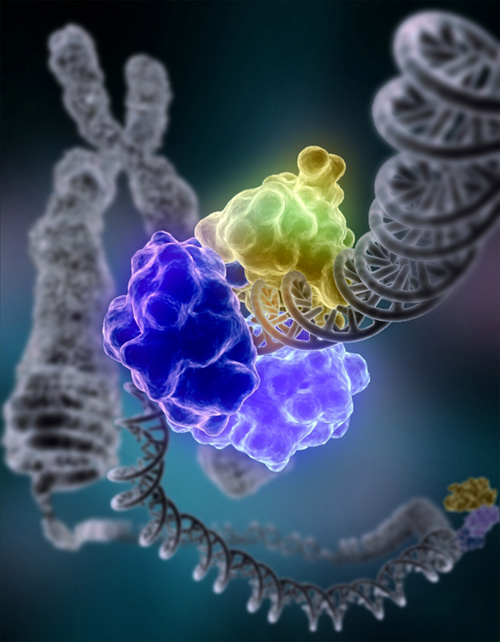Cell cycle arrest and apoptosis are not dependent on p53 prior to p53-dependent embryonic stem cell differentiation, and DNA damage-induced apoptosis was p53-independent.
Human (induced) pluripotent stem cell differentiation, from endoderm toward mesoderm was driven by a DNA damage-induced, time-sensitive, p53 transcriptional program. In cells passing through epithelial-to-mesenchymal transition DNA damage prevents the normal reduction of p53 levels, diverting the transcriptional program toward mesoderm without induction of an apoptotic response.
From the blastocyst, villous cytotrophoblasts undergo a partial epithelial to mesenchymal transition (EMT) when they differentiate into extravillous cytotrophoblasts and gain the capacity to migrate and invade. Extravillous cytotrophoblast invasion involves a cellular transition from an epithelial to mesenchymal phenotype. TWIST, an emerging gene of interest strongly influences p53 to complete EMT.
p53 is necessary for cells to initiate EMT, but attenuation of its levels by MDM2 is also necessary for expression of the mesenchymal phenotype. Downregulation of p53 may be directly controlled by this transition as the EMT factor TWIST1 can bind p53 leading to its MDM2-dependent degradation. During definitive endoderm differentiation, downregulation of p53 may be necessary for the normal transcriptional program to proceed. The unscheduled stabilization of p53, caused by DNA damage may result in a transcriptional perturbation driving differentiation away from definitive endoderm.
Using KRAS-driven pancreas tumor-derived cancer cells as a model of p53 loss, p53 deletion can promote immune tolerance through the recruitment of both myeloid and Treg cells. Enrichment of these suppressive cell populations enhanced the protection of p53-null cancer cells from immune-mediated elimination.
Tumor-derived VEGF through VEGFR2 and NRP-1 creates a perivascular niche to regulate the initiation and stemness of skin tumors and autocrine VEGF promotes survival and invasion of prostatic, pancreatic cancer and glioblastoma cells, particularly for cancer stem-like cells in a NRP-1-dpendent enhanced EMT manner.
A recent SARS-CoV2 update may point to anti-apoptotic affects that occur through the axis inactivation of p53 and mitochondrial apoptotic pathway as mediated by NRP-1, in endothelial cells of Zebra Fish. Decreased levels of p53 might suppress caspase cleavage and therefore downregulate apoptosis (a feature of Covid19). Data showed that p53 is the downstream signaling molecule of PI3K/Akt pointing at MDM2 as a signaling component in NRP-1 survival signaling. NRP-1 was shown as a host factor for SARS-CoV-2 infection and in a successful Covid19 phase trial, for critical care patients injection of apoptotic cells induced signaling to restore immune homeostasis.
Elimination of senescent tumors, by Natural Killer (NK) cells occurred as a result of signal cooperation associated with p53 expression or senescence, which regulate NK cell recruitment and other signals that induce NKG2D ligand expression on tumor cells. p53 expression enhances CCL2-dependent NK cell recruitment to the tumors.
A feature of several NK cell activating receptors resides in their capacity to detect self molecules induced in conditions of cellular stress. This is the case for NKG2D, which interacts with various ligands, including CCL2 that are expressed at low levels in most tissues but are overexpressed upon initiation of cellular distress, for example, after initiation of the DNA damage response.
Codondex is working to identify p53 status in cells isolated from TME tissue samples that can be cocultured to educate NK cells to stimulate a desired immune response.

No comments:
Post a Comment